How to Attract Wildlife to Your Garden: A harmonious symphony of nature awaits as you embark on the journey to transform your garden into a vibrant haven for wildlife. The flutter of wings, the gentle rustling of leaves, and the mesmerizing hum of pollinators—all weaving a tapestry of life that transcends the boundaries between human spaces and the wild.
In this guide, we’ll delve into the art of nurturing a thriving ecosystem right outside your door, embracing the delicate dance of coexistence between plants, creatures, and the curious heart of a nature lover..
Importance of Wildlife in Garden
Understanding the Importance of Wildlife in Your GardenThis is where our journey into creating a wildlife-friendly garden truly begins. Wildlife isn’t just an aesthetic addition; it’s an integral part of a thriving ecosystem that works harmoniously to support plant pollination, soil health, and even natural pest control. Every chirp, flutter, and rustle contributes to the intricate symphony of nature.
The Role of Wildlife in a Balanced Ecosystem
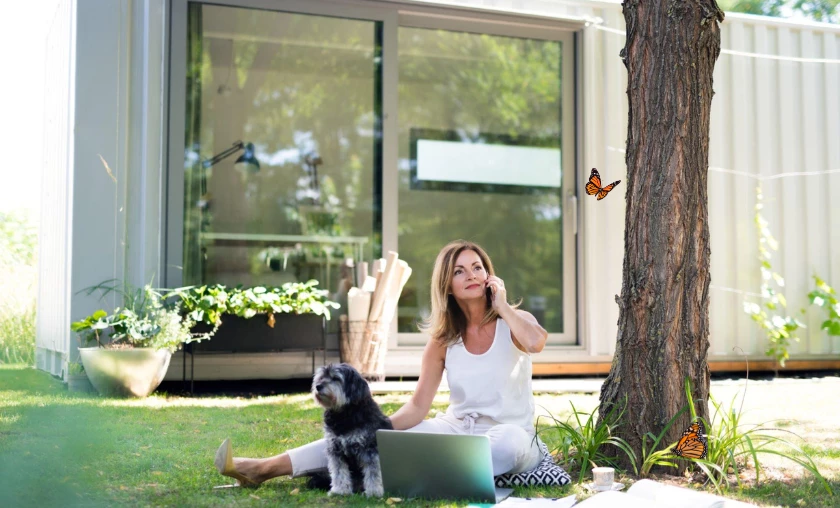
Imagine a world where the gentle buzz of bees is absent or where the colors of butterflies no longer grace our flowers. Wildlife, from the tiniest insects to the grandest birds of prey, all have their part to play. Bees diligently pollinate our plants, aiding in the reproduction of fruits and vegetables. Birds.
On the other hand, helps control insect populations, ensuring that our garden thrives without the need for excessive pesticides. It’s like a puzzle, where each piece contributes to the bigger figure of a healthy and balanced ecosystem.
Benefits of Creating a Wildlife-Friendly Garden
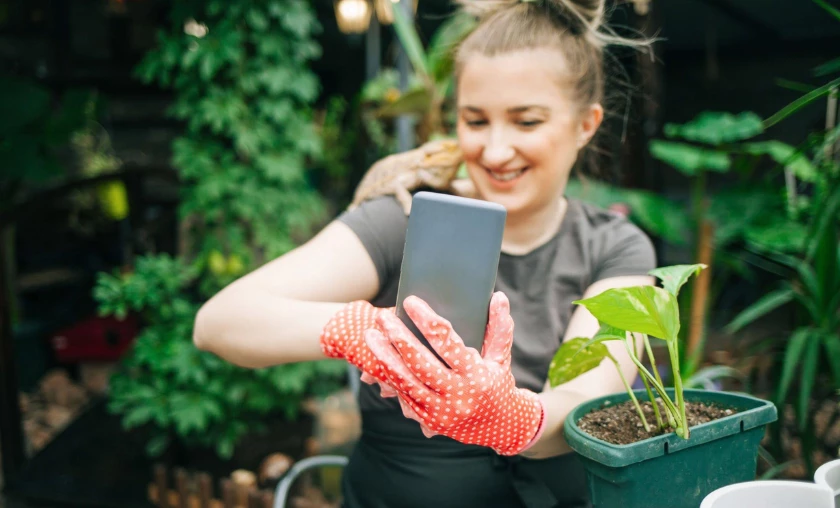
Now that we’ve unveiled the essential role of wildlife let’s dive into the incredible benefits of embracing a wildlife-friendly approach in our gardens. Your garden teeming with life as butterflies dance from bloom to bloom and birds serenade you with their sweet melodies.
Beyond the sensory delights, there’s a practical side, too. Inviting wildlife into your garden fosters a self-sustaining environment where natural processes take the reins. This means less reliance on chemical interventions and a garden that thrives with vitality. Plus, let’s not forget the joy of watching your garden become a hub of biodiversity—a testament to your commitment to nature’s well-being.
Plants for Wildlife Attraction
Choosing the Right Plants for Wildlife AttractionAs we delve deeper into the art of creating a haven for wildlife in our gardens, the role of plants takes center stage. Just as a cozy nest provides shelter, the right plants are the heart and soul of a thriving wildlife habitat. So, let’s explore the two pillars that form the foundation of this verdant journey: the significance of native plants and the magic of flowers, shrubs, and trees that beckon pollinators.
Native Plants: The Heart of a Wildlife Haven
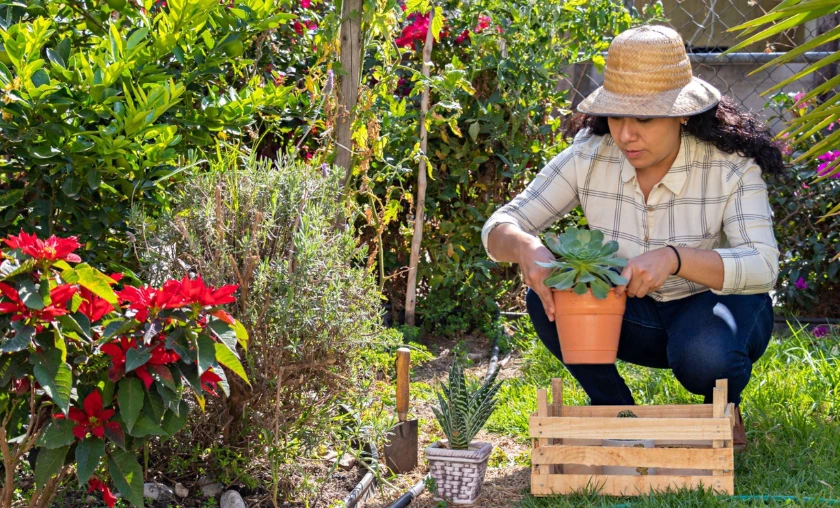
Imagine stepping into a garden where the plants look at home and provide sustenance and refuge to the local wildlife. This is the magic of native plants. These are the flora that have evolved side by side with the wildlife in your area, creating an intricate web of symbiotic relationships.
Native plants offer food and shelter that cater specifically to the needs of local creatures, whether it’s a butterfly sipping nectar from a flower or a bird finding safety in the branches. By incorporating native plants into your garden, you’re fostering an environment that feels like home to both wildlife and plants alike.
Flowers, Shrubs, & Trees That Attract Pollinators

Now, let’s delve into the captivating world of pollinators—a critical link in the chain of life. Imagine your garden as a bustling bazaar, with vibrant blooms acting as alluring stalls. Bees, butterflies, and even hummingbirds are the enthusiastic patrons of this market, moving from flower to flower, transferring pollen as they go.
Select plants with bright and fragrant flowers rich in nectar and pollen to entice these visitors. Think of sunflowers, coneflowers, and lavender, each with its unique charm that beckons the pollinators to partake in a sweet buffet. By planting a variety of these species, you’re creating a visually stunning landscape and providing sustenance to the creatures that keep our ecosystems thriving.
Creating Habitat Diversity
Creating Habitat Diversity for Various SpeciesIt’s time to delve into the art of creating diverse habitats that cater to the unique needs of our beloved wildlife. Just as a home is more than its walls, a thriving garden is a symphony of spaces where every creature finds its niche. So, let’s explore the enchanting world of crafting nooks and crannies for shelter and the serene allure of water features that beckon aquatic life.
Crafting Nooks & Crannies: Shelter for Small Animals

In the intricate dance of nature, shelter is a vital partner to sustenance. Imagine your garden as a cozy neighborhood, with each corner providing refuge for creatures of all sizes. Fallen leaves and twigs become hiding spots for insects, while nooks in rocks create homes for lizards and toads.
Even a well-placed birdhouse offers safety to our feathered friends. By thoughtfully arranging spaces that mimic the wild, you create a thriving community that encourages animals to make themselves home. As you craft these small sanctuaries, envision the joy of providing safe havens for creatures seeking respite in a world that can sometimes feel overwhelming.
Water Features: Inviting Aquatic Life to Your Garden

Water, the elixir of life, adds an entirely new dimension to your wildlife haven. See the gentle trickle of a stream or the shimmering surface of a pond—a siren’s call to aquatic life. Birds come to bathe, frogs find solace, and dragonflies grace the air. Incorporating water features not only adds to the aesthetic allure of your garden but also provides an oasis for creatures in need of hydration and nourishment.
Even the tiniest of containers, transformed into mini-ponds, can attract a symphony of life. So, as you design these liquid landscapes, remember that you’re not just creating beautiful focal points; you’re opening your arms to the mesmerizing world that thrives beneath the surface.
Stations & Strategies for Birds
Feeding Stations & Strategies for BirdsLet’s focus our attention on the enchanting world of our feathered friends. Birds bring life, color, and song to our outdoor spaces, and attracting them requires a thoughtful approach to feeding and providing the right sustenance. So, let’s explore the delightful realm of DIY bird feeders and discover the art of offering the perfect seeds for a variety of bird species.
DIY Bird Feeders: A Feast for Feathered Friends
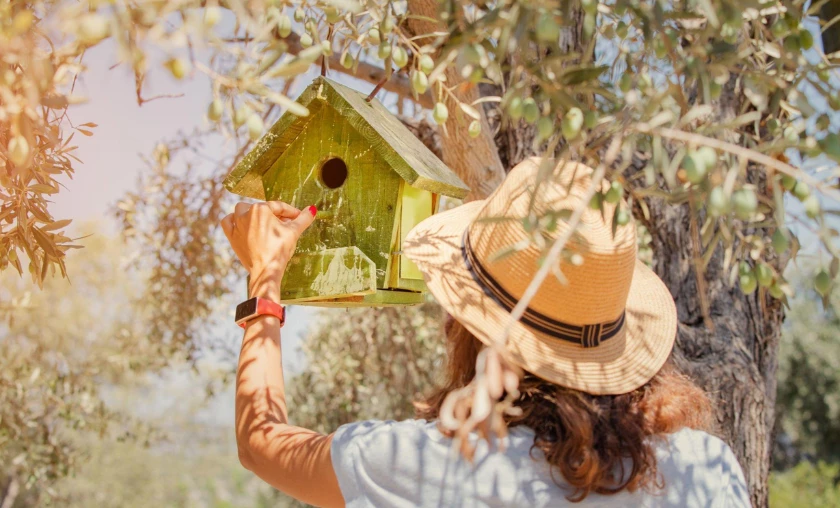
Creating DIY bird feeders is not just a craft; it’s an invitation to a grand banquet for these aerial visitors. From simple pinecone feeders coated with peanut butter to intricate wooden creations, there’s no shortage of ways to offer nourishment with a touch of creativity.
These feeders become more than just stations for food; they’re gathering spots where you can witness the delight of birds enjoying a meal you’ve thoughtfully provided.
Providing the Right Seeds for Different Bird Species

Now, let’s delve into the art of choosing the right seeds to cater to the distinct tastes of various bird species. Just as a diverse menu appeals to different palates, an array of seeds ensures that your garden’s feathered visitors find their preferred treats. Sunflower seeds are beloved by many, attracting finches, cardinals, and chickadees.
On the other hand, Nyjer seeds are a magnet for lively goldfinches. By offering a blend of seeds, you’re creating a welcoming table that accommodates a myriad of visitors, from dainty sparrows to spirited woodpeckers.
Natural Pest Control
Natural Pest Control Through PredatorsLet’s uncover the fascinating world of natural pest control. Just as a delicate dance brings balance to nature, the introduction of beneficial predators can transform your garden into a thriving ecosystem where pests are kept at bay. Join me as we learn to welcome the unseen heroes—birds, insects, and even reptiles—who contribute to the health of our garden spaces.
Welcoming Beneficial Predators: Birds & Insects
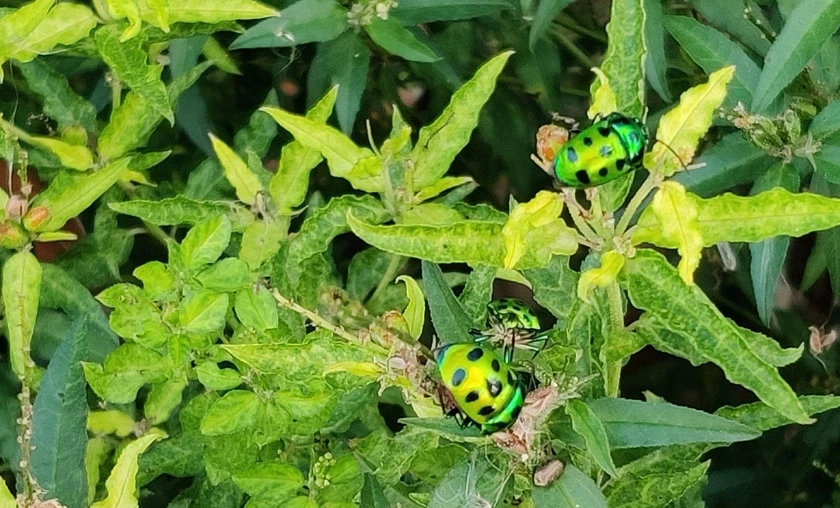
Think of beneficial predators as nature’s own pest control squad, patrolling your garden for unwanted guests. Birds like swallows and bluebirds are voracious insectivores, feasting on pests that might otherwise damage your plants. Ladybugs,
known as nature’s gardeners, dine on aphids and other nuisances that can harm your garden’s vitality. By offering nesting sites and planting companion plants, you’re not just inviting these predators but fostering a delicate balance that allows them to thrive and contribute to your garden’s well-being.
Encouraging Owls, Hawks, & Snakes to Keep Pests at Bay

Now, let’s explore the world of raptors and reptiles—powerful predators that often remain hidden from view but play a crucial role in maintaining the health of your garden. Owls and hawks are silent hunters of the night sky, swooping down to snatch rodents and pests that threaten your plants. Even snakes, often misunderstood, help keep populations of small mammals in check.
By providing perches and nesting platforms and allowing safe spaces for these creatures, you’re embracing the circle of life that unfolds in your garden, ensuring that nature’s checks and balances remain intact.
Safe Wildlife-Friendly Structures
Incorporating Safe Wildlife-Friendly StructuresLet’s explore the realm of safe and purposeful structures that invite creatures to take refuge and thrive. Just as our homes provide comfort and security, these structures extend the same welcome to our wild neighbors. Join me as we discover the magic of nesting boxes, insect hotels, and the delicate balance between safety and accessibility for our cherished wildlife.
Nesting Boxes & Insect Hotels: Providing Homes for Creatures

Imagine your garden as a bustling neighborhood where creatures of all sizes seek shelter and safety. Nesting boxes and insect hotels are like cozy apartments tailored to the needs of various inhabitants.
A well-designed nesting box can offer a snug home to birds like bluebirds and chickadees, while an insect hotel becomes a sanctuary for solitary bees and beneficial insects. By thoughtfully placing these structures throughout your garden, you’re providing an open invitation to creatures seeking a place to call their own. These structures become more than physical homes; they become symbols of your commitment to creating a sanctuary for all who visit.
Balancing Safety & Accessibility for Wildlife

Now, let’s delve into the delicate art of balancing safety and accessibility for the wildlife that graces your garden. As much as we want to create a welcoming environment, we must also ensure that our interventions align with the natural behaviors of our wild friends. Avoid creating structures that might inadvertently trap or harm them. Focus on providing ample space for movement and access to food and water sources.
Think of it as building a bridge between the wild and the human, a bridge that facilitates coexistence rather than imposing upon it. You’re allowing wildlife to flourish without unnecessary interference by offering safe passages and inviting stations.
Chemical Use & Garden Practices
Minimizing Chemical Use & Garden PracticesAs stewards of these spaces, we can minimize chemical use and adopt methods that safeguard our cherished wildlife and the delicate balance of our ecosystems. Join me as we journey into the world of organic gardening practices, uncovering harmful chemicals to avoid and discover the transformative impact of our choices.
Going Organic: Protecting Wildlife & Plants
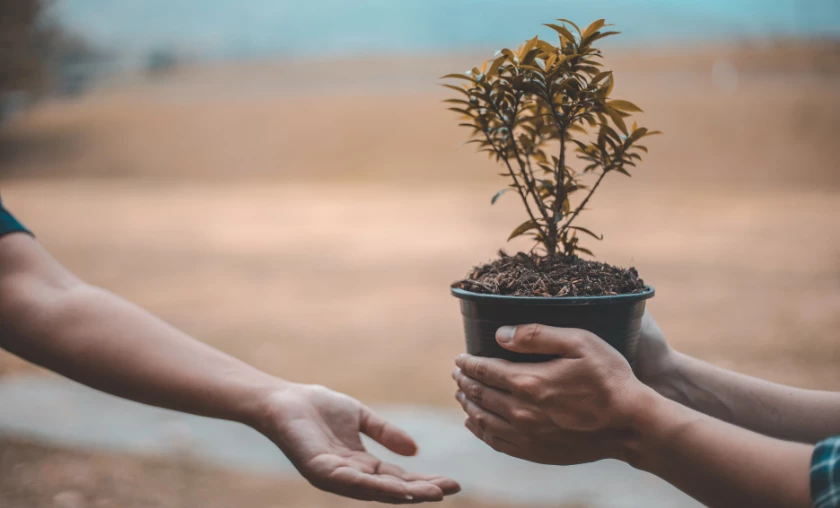
A garden that thrives without the aid of harmful chemicals—a sanctuary where life flourishes in harmony with the land. Organic gardening isn’t just a trend; it’s a commitment to fostering a sustainable ecosystem that benefits both wildlife and plants. By avoiding synthetic pesticides and herbicides, you’re safeguarding the health of pollinators, birds, and insects that call your garden home.
Embrace the power of companion planting, natural fertilizers, and integrated pest management. These practices nurture the earth beneath your feet and send a powerful message that you’re dedicated to creating a safe space for all forms of life.
Harmful Chemicals to Avoid in a Wildlife-Friendly Garden

As we embark on this organic gardening journey, let’s shed light on the harmful chemicals that can inadvertently disrupt the balance of our delicate ecosystem. Pesticides like neonicotinoids, known for their detrimental impact on pollinators, are best avoided. Herbicides that target broadleaf plants can harm the intended targets and the insects that depend on those plants for sustenance.
By steering clear of these chemicals, you’re taking a stand against practices that compromise the very essence of a wildlife-friendly garden. Your garden becomes a haven free from toxic residues, where every creature can roam, feed, and thrive without fear.
Wildlife-Friendly Garden
Maintaining Your Wildlife-Friendly GardenIt’s essential to explore the art of maintenance. Just as a tapestry needs care to remain vibrant, our wildlife-friendly garden requires attention and adaptation to ensure its ongoing vitality. Join me as we uncover the rhythm of seasonal changes and the importance of regular maintenance in sustaining the haven we’ve crafted.
Seasonal Changes: Adapting Your Garden for Different Times of Year

Imagine your garden as a living entity, evolving with the changing seasons, each bringing its own set of visitors and needs. Adapting your garden to these shifts is like choreographing a dance where each movement flows seamlessly with the rhythm of nature. As spring ushers in new life, consider planting nectar-rich flowers for migrating birds and emerging pollinators. In summer, provide water sources for creatures seeking relief from the heat. Come autumn, allow seed-bearing plants to flourish, offering sustenance for birds preparing for winter.
And as winter blankets the landscape, remember that even a simple bird feeder can be a lifeline for our feathered friends. By embracing these seasonal shifts, you’re not just creating a garden but fostering a dynamic ecosystem that thrives year-round.
Regular Maintenance to Sustain the Habitat
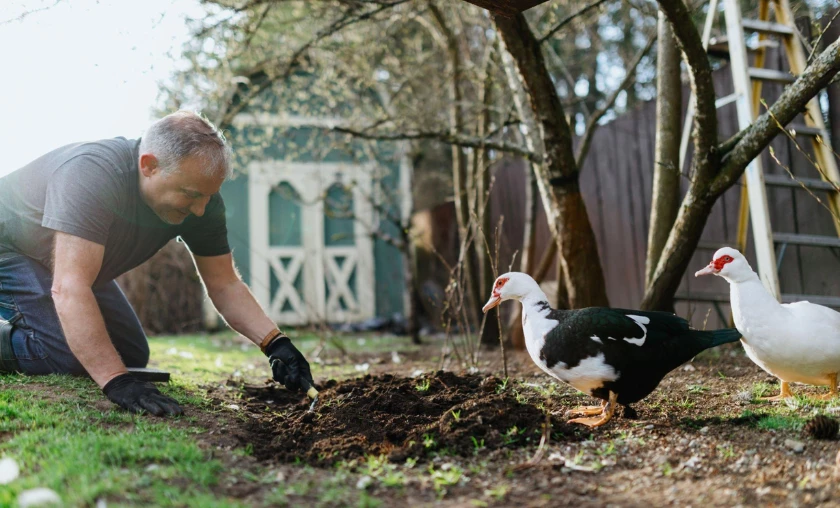
Now, let’s delve into the importance of regular maintenance in sustaining the habitat we’ve nurtured. Just as relationships require care and attention, so does our connection with nature. Regular tasks like pruning, weeding, and cleaning water sources ensure that our garden remains inviting and safe for wildlife. Regularly inspect nesting boxes, cleaning them after each breeding season.
Check feeders and refill them to keep the banquet for birds and creatures overflowing. Through these small acts, you’re demonstrating your commitment to creating a thriving sanctuary for all who grace your garden.
Tracking & Documenting
Tracking & Documenting Wildlife ActivityIt’s turning our attention to the fascinating practice of tracking and documenting the life that unfolds within our sanctuary. Just as a journal captures the essence of our experiences, tracking wildlife activity allows us to forge a more intimate connection with the creatures that share our space.
Observing & Recording Garden Visitors

Imagine yourself as a silent observer in your garden—a witness to the daily dramas and tender interactions that often escape our notice. Observing and recording the visitors that grace your space can be a transformative experience.
Keep a journal, capture photos, or take mental notes of the species that appear. Record the times they visit, the behaviors you observe, and any patterns that emerge. Over time, you’ll find yourself becoming attuned to the rhythms of your garden and the stories it tells through its inhabitants.
Embracing Citizen Science for Wildlife Monitoring

Now, let’s explore the world of citizen science—a realm where your observations contribute to scientific knowledge and conservation efforts. Platforms like eBird, iNaturalist, and Project FeederWatch allow you to share your sightings, contributing valuable data that researchers and scientists use to better understand wildlife populations and migration patterns.
By participating in citizen science, you’re not just an observer; you’re part of a global network of nature lovers who are making a meaningful impact on our understanding of the natural world. Your backyard becomes a node in a larger ecosystem of information, and your observations become a testament to the beauty and diversity of life around us.
Troubleshooting Challenges
Troubleshooting Common ChallengesAs we immerse ourselves in the world of creating a thriving habitat for wildlife in our gardens, it’s important to acknowledge that challenges can arise along the way. Just as life brings complexities, our gardens may encounter situations requiring thoughtful solutions. Join me as we explore the art of troubleshooting common challenges, from maintaining a harmonious balance between wildlife and pets to addressing the overpopulation of certain species.
Balancing Wildlife & Pets: Tips for Harmony
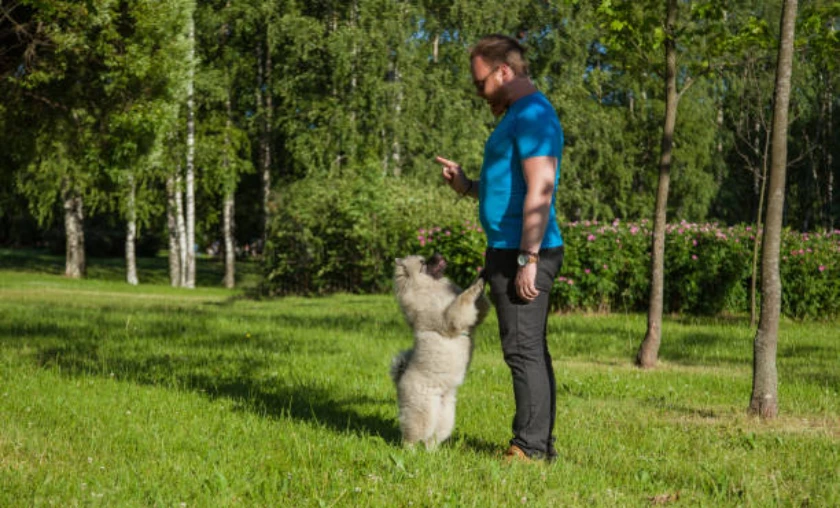
Your garden is a stage where the wild and the domesticated coexist, each with its distinct role in the ecosystem. Balancing the presence of wildlife and pets requires patience, understanding, and a touch of strategic planning. Keep pets on leashes or establish designated play areas to prevent them from disturbing sensitive habitats or chasing away visiting creatures.
Provide safe spaces for wildlife to seek refuge, such as elevated bird feeders or shelters. By setting boundaries and offering alternatives, you create an environment where your furry companions and the wild inhabitants can enjoy the garden without conflict.
Dealing with the Overpopulation of Certain Species

Now, let’s delve into the challenge of managing the overpopulation of certain species—a situation that can disrupt the delicate equilibrium of your garden’s ecosystem. While we cherish the presence of wildlife, an abundance of certain creatures can lead to habitat degradation or resource depletion.
Addressing this challenge requires a gentle touch and an understanding of the specific species in question. Research natural predators or identify local organizations that can help manage populations if needed. By taking informed and compassionate steps, you’re demonstrating your commitment to the overall health and balance of your garden’s ecosystem.
Conclusion
In the wondrous journey of transforming your garden into a haven for wildlife, you’ve embarked on a path of profound connection with the natural world. As you’ve explored the intricacies of native plants, nurtured diverse habitats, and welcomed the melodies of birds and the buzz of pollinators, you’ve embraced a deeper relationship with the creatures that share your space.
Remember that your garden isn’t just a canvas for beauty; it’s a living tapestry of life, a sanctuary where every creature finds refuge and sustenance. By adopting organic practices, nurturing wildlife-friendly structures, and embracing citizen science, you’ve become a guardian of nature’s intricate web, leaving a legacy of mindful stewardship for generations to come.
As the seasons change and your garden’s story continues to unfold, may your journey be filled with wonder, discovery, and a profound appreciation for the remarkable symphony of life that thrives around you. Your garden is now a living testament to your commitment to coexisting harmoniously with the wild, a testament that speaks of the boundless beauty that emerges when humans and nature dance in harmony.
FAQs
Can I attract wildlife to my small urban garden?
Absolutely! Even a tiny garden can become a thriving habitat. Opt for container plants that attract pollinators, hang bird feeders or hummingbird feeders, and create vertical space for climbing plants. You’ll be amazed at the wildlife that finds its way to your urban oasis.
How can I keep squirrels from raiding my bird feeders?
Squirrels can be persistent, but there are ways to deter them. Use squirrel-proof feeders with weight-sensitive mechanisms. Place feeders away from trees or structures squirrels can jump from. Offering squirrel-specific feeders stocked with nuts can distract them from bird feeders.
How can I create a safe habitat for frogs & toads?
Creating a frog and toad-friendly environment is a wonderful endeavor. Incorporate water features like shallow ponds or damp areas for breeding and shelter. Use native plants around the water, and avoid chemical pesticides that can harm these amphibians.
What’s the best way to handle the overpopulation of a certain animal in my garden?
Overpopulation challenges can be addressed with care. Research the species in question and identify any natural predators. Contact local wildlife experts or conservation organizations for guidance. Remember, it’s about finding a balance that respects the ecosystem’s harmony.
How can I involve my children in wildlife gardening?
Engaging kids in wildlife gardening is a rewarding family activity. Allow them to choose plants that attract butterflies or provide them with a designated spot to plant seeds. Create a wildlife observation journal or participate in citizen science projects together, fostering a lifelong love for nature.
To read more similar articles, click here.
Thanks for visiting our Website. If you appreciate our work, kindly show us some support in our comments section. 🙂




